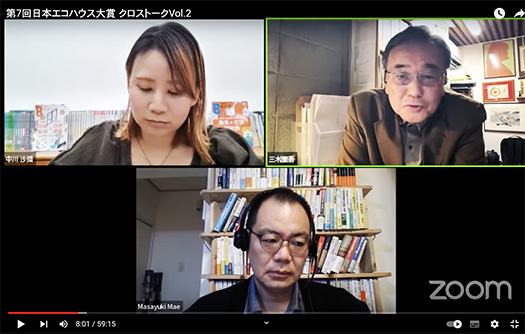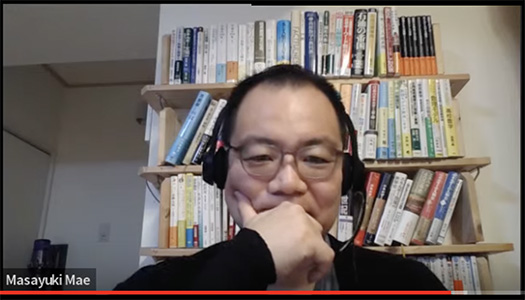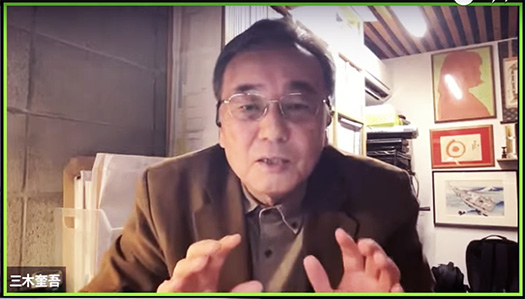
昨日は夕刻18:30から19:30までの1時間、建築専門誌・建築知識ビルダーズさんの主催される表題の日本エコハウス大賞の「ゲスト審査員」として前振りのクロストークというのに参加しました。
この様子は、https://www.youtube.com/watch?v=AaMQELSgsJU&t=21s で動画配信されていますので、ご興味のある方はご視聴ください。
内容はエコハウス大賞という趣旨に添ったもので、司会の方からはいきなり住宅内の「湿度管理」についてという超マニアック(笑)な振り方。建築専門誌という立場として、主要な読者対象をプロの建築専門家にフォーカスされているのだろうと推察されました。相方はReplan誌面で連載で記事執筆していただいている東大工学部の前真之先生。
前先生はこのテーマについての有数の専門家ですから学ばせていただきつつ、わたしとしてはユーザー視点に近い立場で応答させていただいていました。
建物内部での「高湿度」対策というのは関東以南地域での「蒸暑」対策として大きく浮かび上がってきているテーマだと思いますが、北海道は列島地域の中でいちばん大陸型の気候に近く、湿度はむしろ乾燥型の気候風土に属している。
わたしの家はそういうなかでコンクリートブロック造という「調湿型の建築構造体」を採用しているので、そういった生活実感に即してお答えし、さらに温暖・蒸暑地域でも漆喰や塗り壁といった先人からの建築素材の知恵が基本になるのではないかと話したりしていました。


温暖・蒸暑地域でも最近は個別の先進的ビルダーさんたちが高断熱高気密住宅技術を摂取されて家づくりに実践され「地域一番店」的にクローズアップされてきています。そういう流れは、新住協の活動がどんどん南下していって以降、顕在化してきたことだと思います。大変喜ばしいことだと思いますが、その大衆化過程ではいろいろな過渡的な事象も生起する。
北海道でも初期の高断熱高気密化段階では、そのことを「差別化」手段として活用される例がありましたが、北海道庁などの公共が公平な基準作りで大きく関与することで、あくまでもユーザー主体の技術基盤形成が進んでいった経緯があります。一部が原理主義的に突出するのではなく、平準的な「普遍化」の方がはるかに重要であり大切だという視点ですね。
こういった機会を捉えて、そうした北海道的な経験知を広く拡散できる機会になれればと思っています。今回のクロストークに続いて、10/26には午後2時から午後6時までの4時間という長時間でエコハウス大賞選考の様子をリアルタイム情報発信されるということ。参加する側としては、その間、Zoomとはいえ、トイレ休憩は可能なのかとハラハラしております(笑)。
そちらの方もぜひご視聴いただければと思います。わたしとしては第1にユーザー視点、そして寒冷地域としての視点というスタンスで参加させていただければと思っています。よろしく。
English version⬇
Participated in “Japan Eco-House Award Crosstalk vol.2
Participating in a project by Architectural Knowledge Builders to promote high performance housing in warm and humid regions. Video distribution is underway. https://www.youtube.com/watch?v=AaMQELSgsJU&t=21s
Yesterday evening, from 6:30 to 7:30 p.m., I participated as a “guest judge” for the Japan Eco-House Award sponsored by the architectural magazine, Architectural Knowledge Builders, as a preliminary cross talk.
The video of this event is available at https://www.youtube.com/watch?v=AaMQELSgsJU&t=21s. Please watch it if you are interested.
The content of the talk was in line with the purpose of the Eco-House Award, and the moderator suddenly took a very maniacal (laugh) turn and talked about “humidity control” in housing. As an architectural magazine, I guessed that the main target audience was focused on professional architectural experts. His partner was Dr. Masayuki Mae of the University of Tokyo’s School of Engineering, who writes a series of articles for Replan magazine.
Dr. Mae is one of the leading experts on this topic, so I was able to learn from him, while I was able to respond from a position close to the user’s point of view.
I think that measures against “high humidity” inside buildings are a theme that has emerged as a major countermeasure against “heat and humidity” in the Kanto and southern regions, but Hokkaido is closest to the continental climate of the archipelago, and humidity is rather dry.
My house is built of concrete blocks, which is a “humidity-regulating building structure,” so I answered the question in line with the realities of daily life. I also said that even in warm and humid regions, the wisdom of our ancestors’ building materials such as plaster and painted walls would be fundamental.
Even in warm and humid regions, recently, individual advanced builders have been taking highly insulated and airtight housing technologies and practicing them in house building, and they are being closely watched as the “best in the region. This trend has become apparent since the Shinjyukyo’s activities have been moving southward. I think it is a very good thing, but in the process of popularization, various transitional events also occur.
In Hokkaido, too, there were some cases where this was used as a means of “differentiation” in the early stages of the development of highly insulated and airtight buildings. However, the Hokkaido Government and other public agencies were heavily involved in creating fair standards, which led to the formation of a user-centered technological infrastructure. This is a viewpoint that universalization is far more important and vital than the fundamentalist prominence of one part of the population.
I hope to seize opportunities like this to spread such Hokkaido-like empirical knowledge widely. Following this crosstalk, on October 26, the Eco-House Award selection process will be broadcasted in real time over a four-hour period from 2:00 p.m. to 6:00 p.m.. As a participant, I am wondering if it is possible to take a restroom break during that time, even though it will be via Zoom (laugh).
(Laughs.) I hope you will be able to watch the event as well. I would like to participate from the user’s point of view first and foremost, and from the perspective of the cold region. Thank you very much.
Posted on 10月 14th, 2023 by 三木 奎吾
Filed under: 住宅マーケティング, 住宅性能・設備







コメントを投稿
「※誹謗中傷や、悪意のある書き込み、営利目的などのコメントを防ぐために、投稿された全てのコメントは一時的に保留されますのでご了承ください。」
You must be logged in to post a comment.